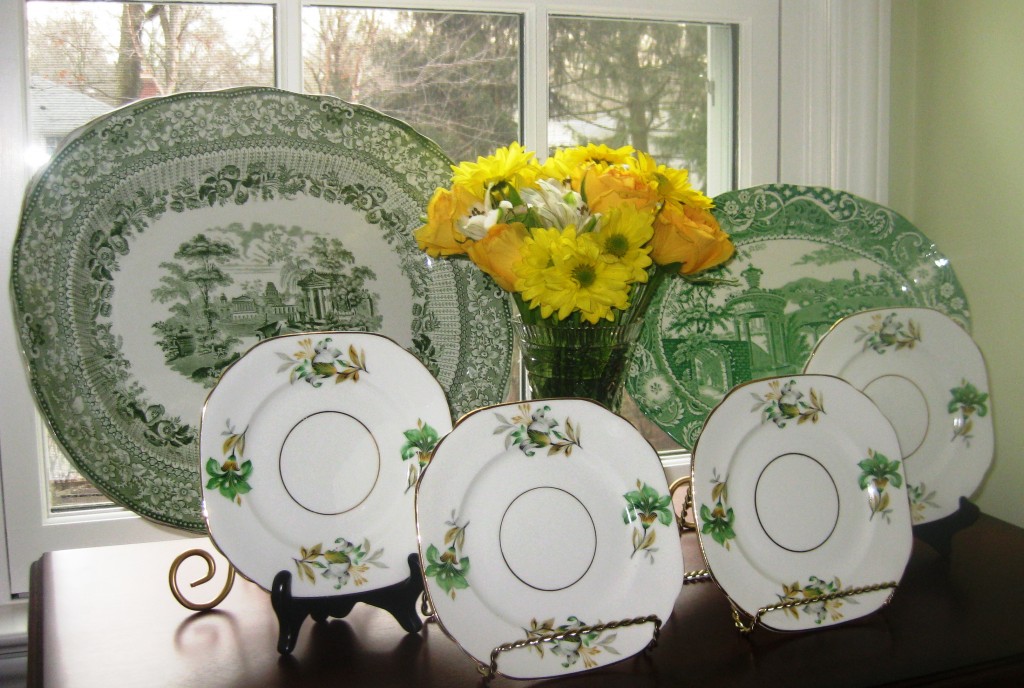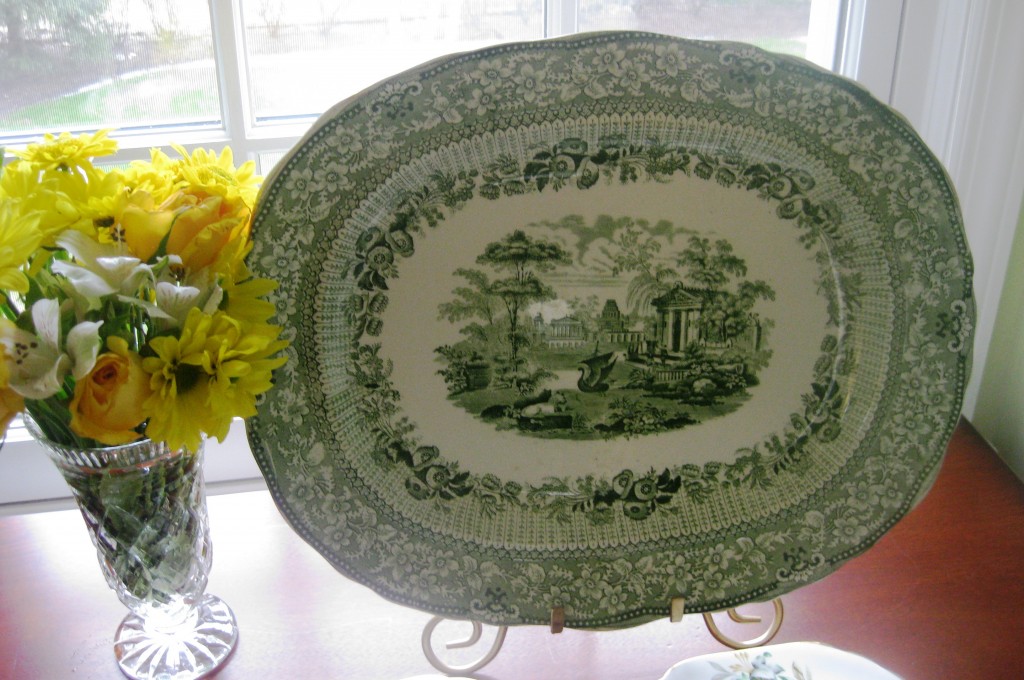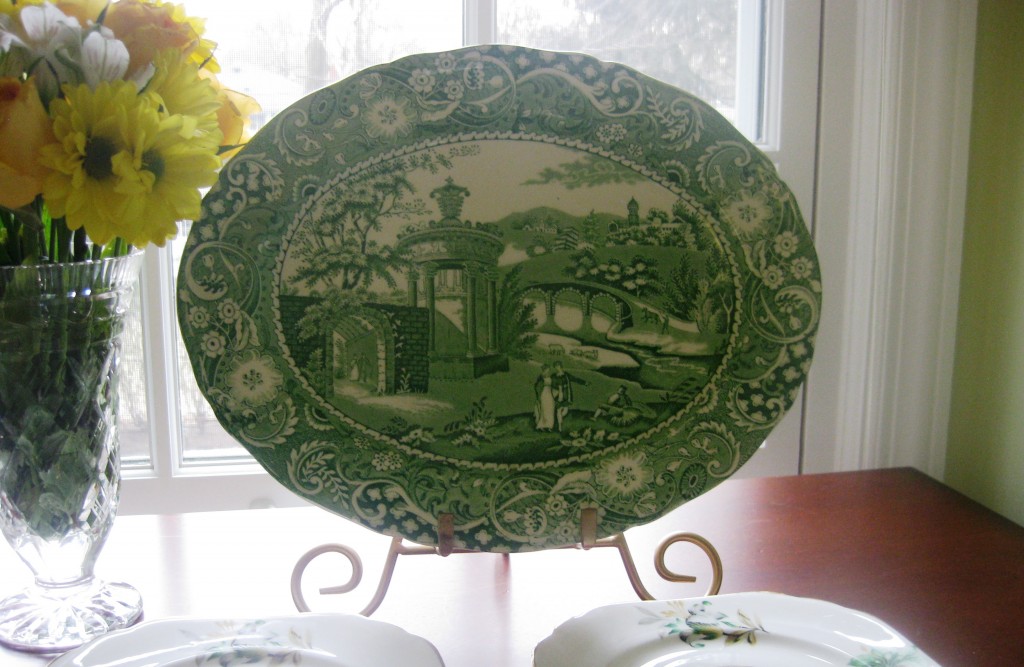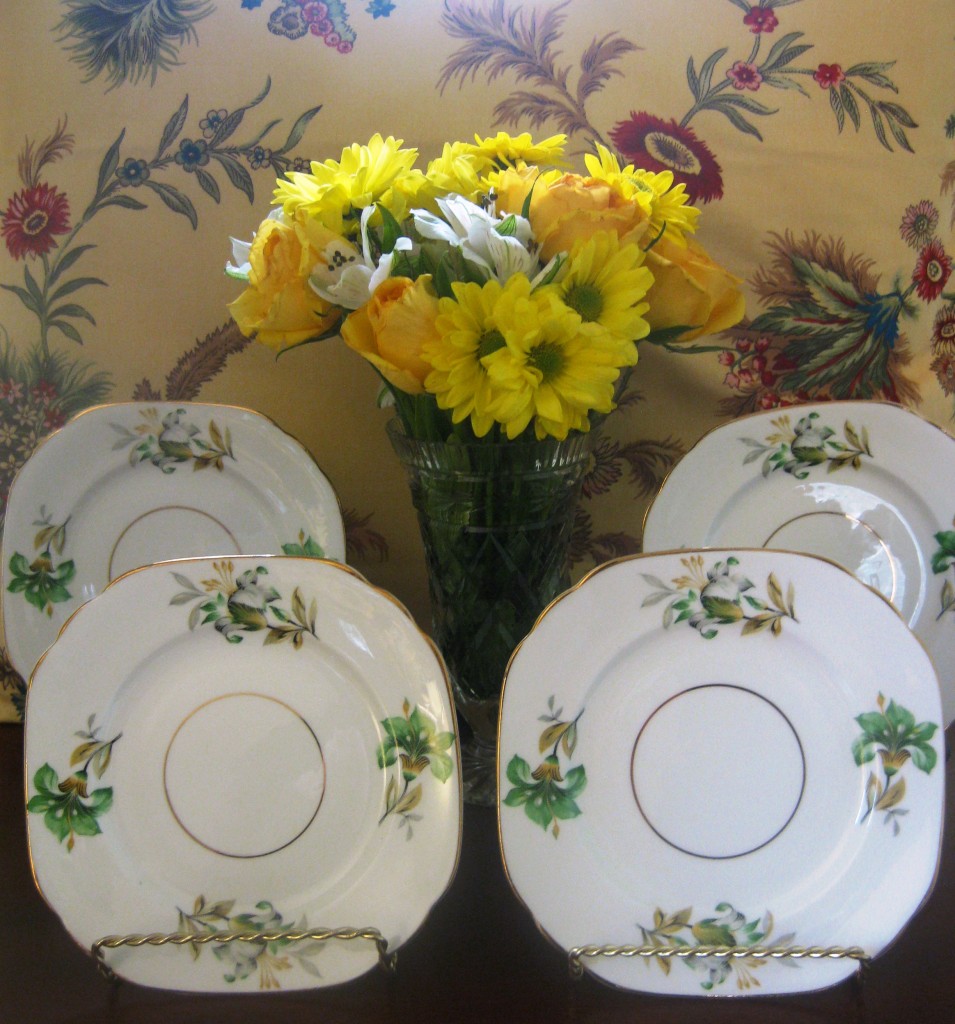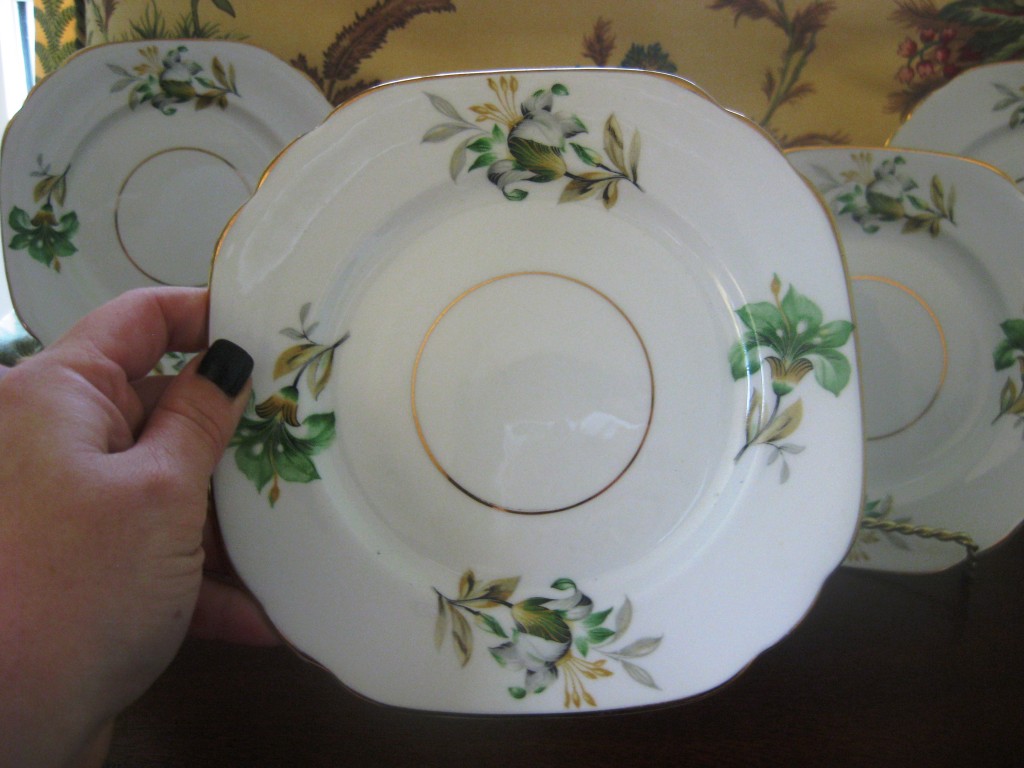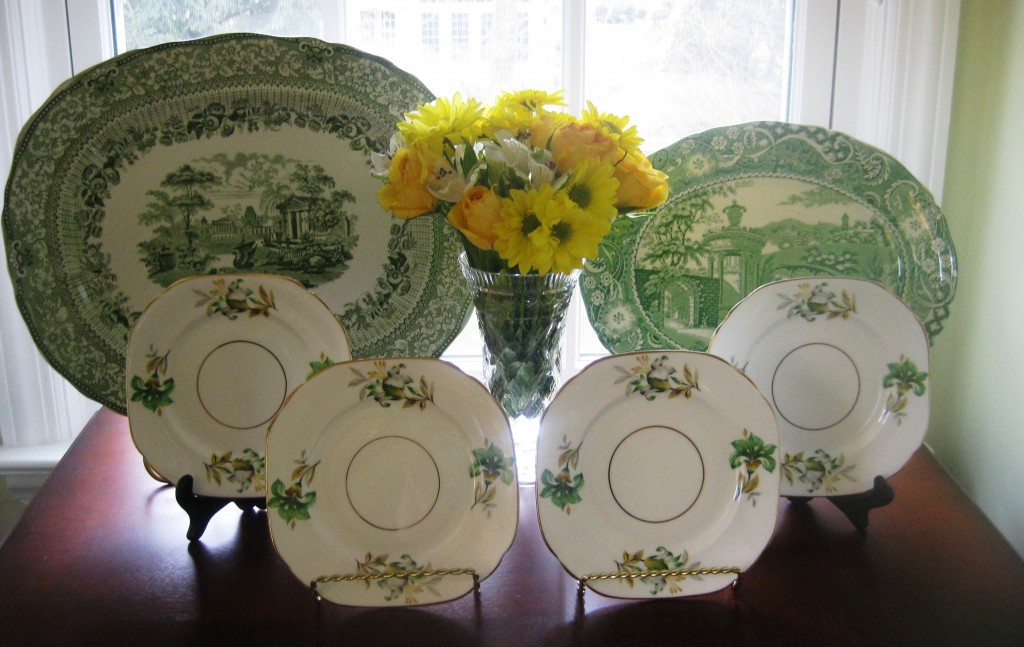Spode…Staffordshire…landscapes…toiles…I just love the look of the underglazed engravings! I have been collecting individual serving platters for the last few years and I particularly like these two green transferware pieces. They work for holiday gatherings as well as Spring/Summer table settings (in fact, I might incorporate these pieces into my St. Patty’s tablescape–March is not that far away!)
This wonderful “Grecian” pattern, circa 1891 – 1910, has a motif of Greek architecture, ruins, gardens, people and animals in shades of green. The wide outer border is an overall pattern of flowers and leaves within a gently scalloped rim. An inner-band consists of ribbons of leaves and floral swags. Each piece is stamped with the mark “Grecian – W. R. Ridgways – England”.
This beautiful W.R. Midwinter “Landscape” plate dates back to 1923. The Makers Mark on the back reads: “Landscape” W.R. Midwinter England. It is highly detailed and very ornate.
I will probably use this transferware along with these vintage plates decorated with lilies in white, green, and yellow. The rims are trimmed in gold. The back is stamped Duchess Bone China, Made in England.
If you are interested in learning more about your transferware, I recommend checking out the pattern and source print database on the Transferware Collectors Club website.
The History of British Transferware:
A good description of the transfer process comes from Pamela Wiggins in an article called “Transferware, a Timeless Decorative Art”. Wiggins says, “Transfer printing as a decorative technique was developed in England in the mid-1750s, particularly in the Staffordshire region. The process began when a flat copper plate was engraved with a desired pattern in much the same way as the plates used to make paper engravings were produced. Once the plate was inked with a ceramic coloring, the design was impressed on a thin sheet of tissue paper. This inked impression was then transferred onto the surface of the ceramic object. After it was inked, the object made its way into a low-temperature kiln to fix the pattern. The printing could be done either under or over the glaze on a ceramic piece, but since the ink tended to wear off on overprinted pieces, the underprinting method became more popular going forward. When examining a transferware decorative object, you can distinguish it by the fine lines produced through the engraving process on the original plate.”

